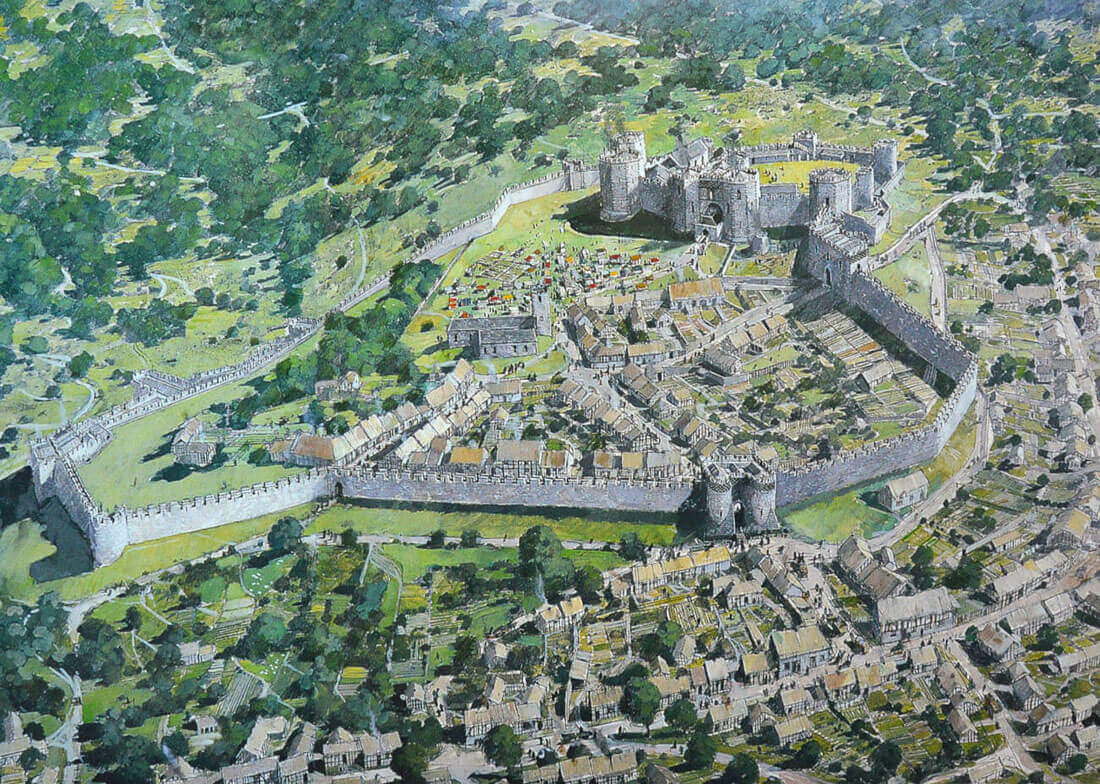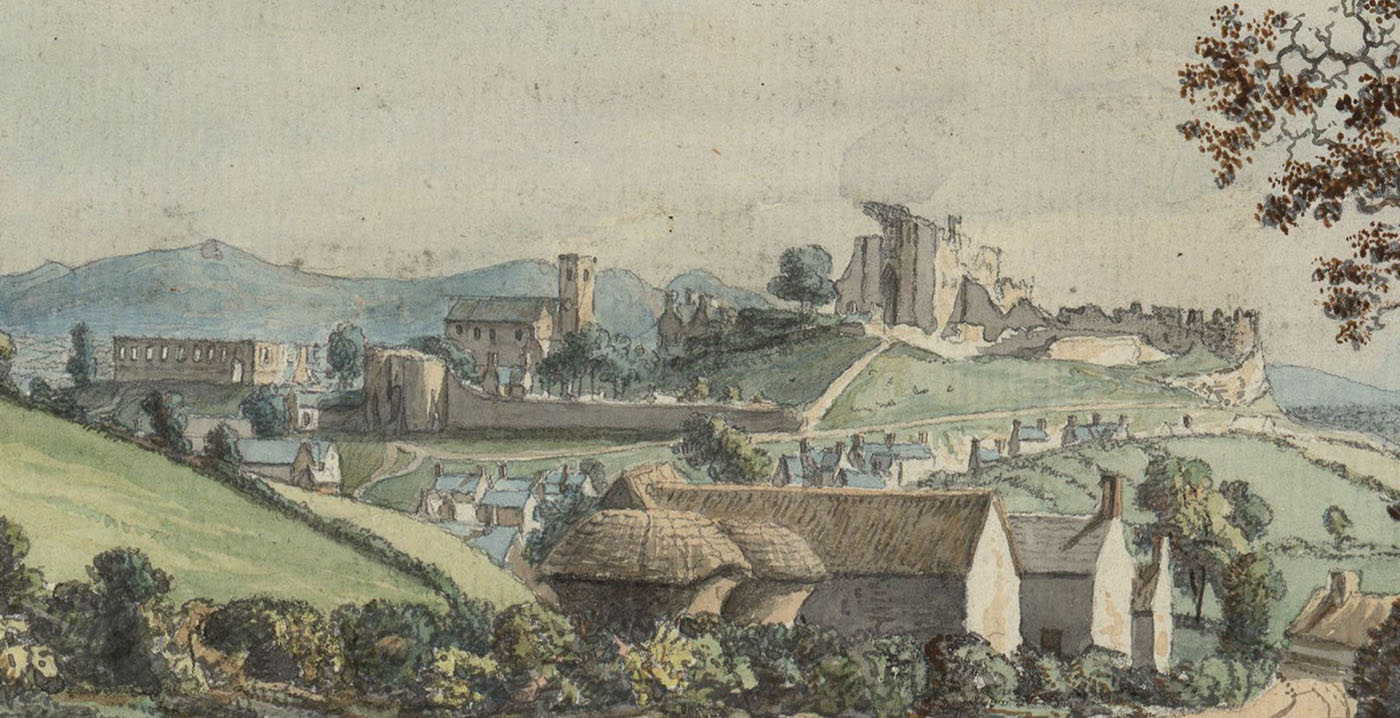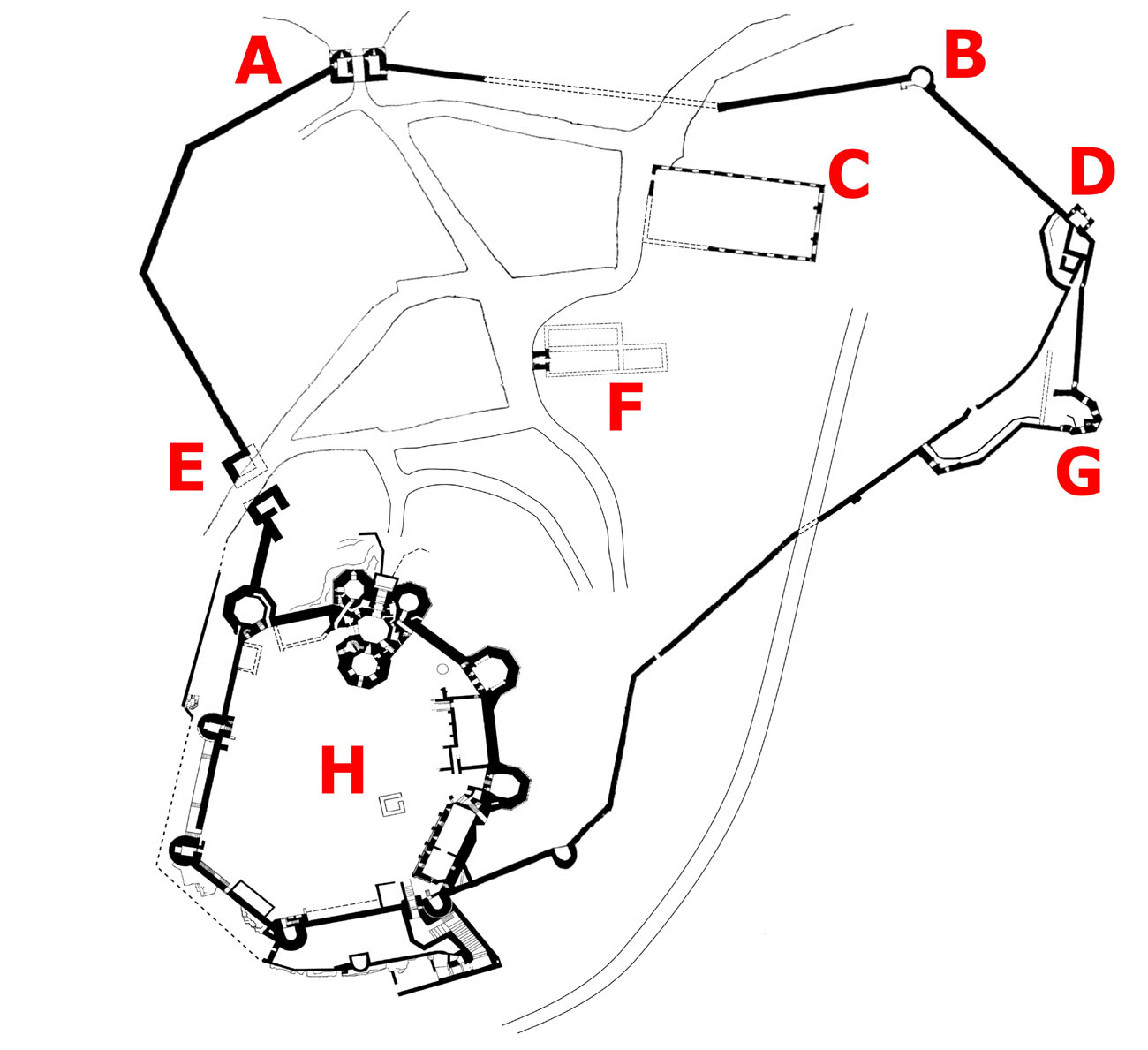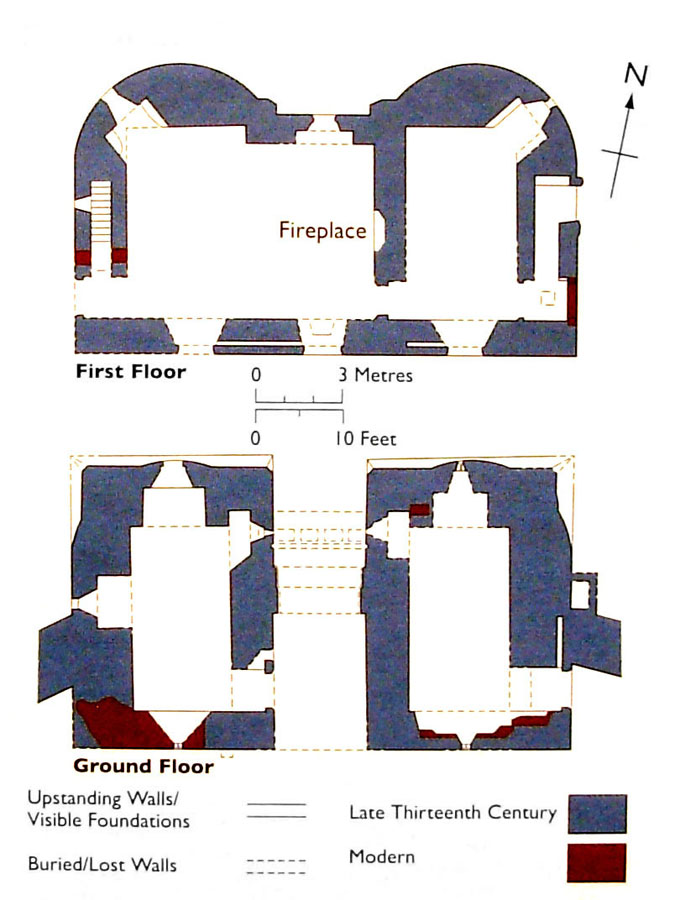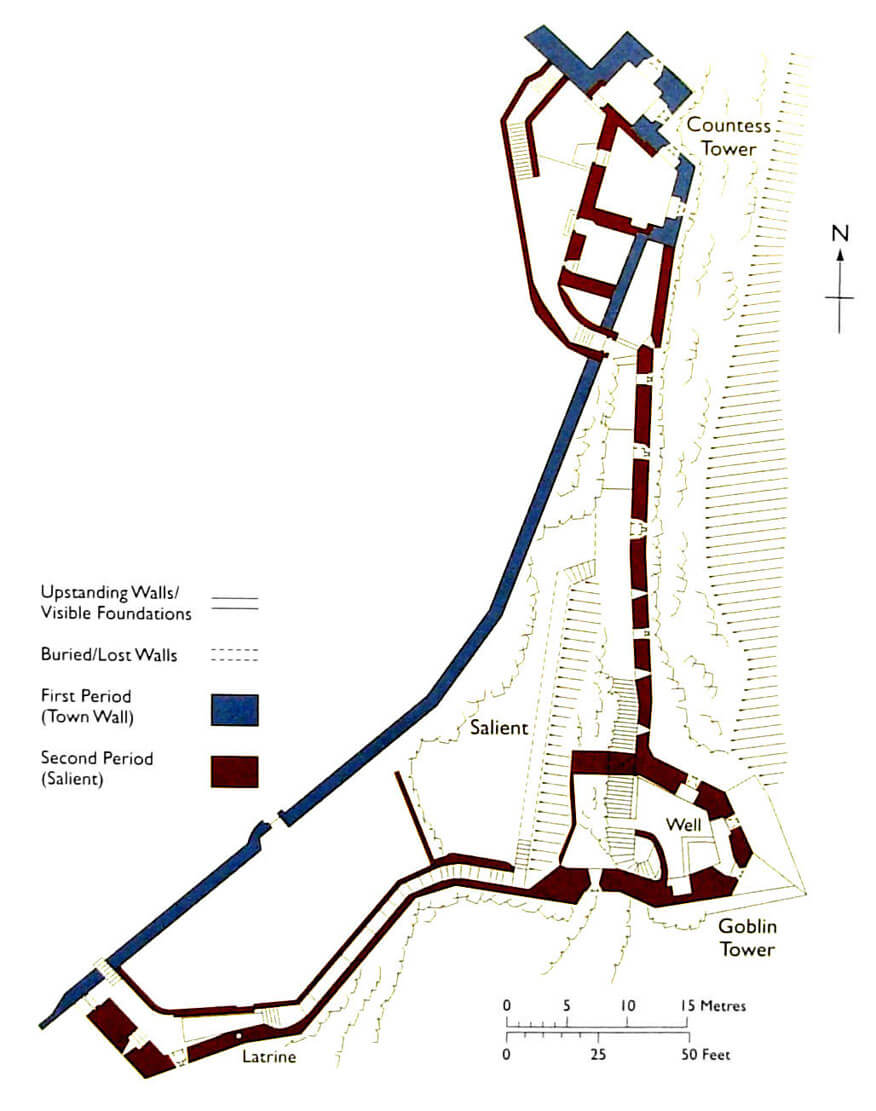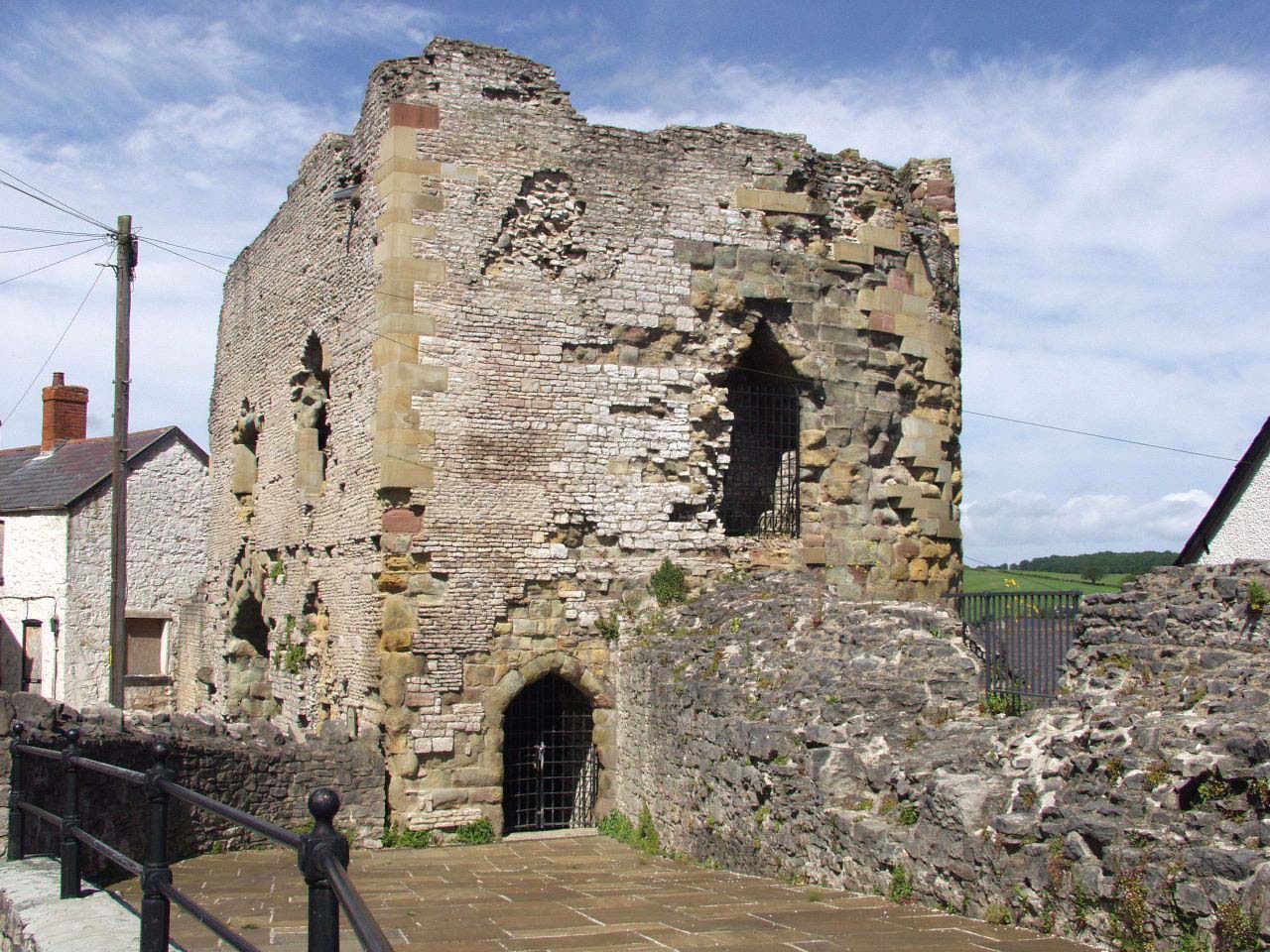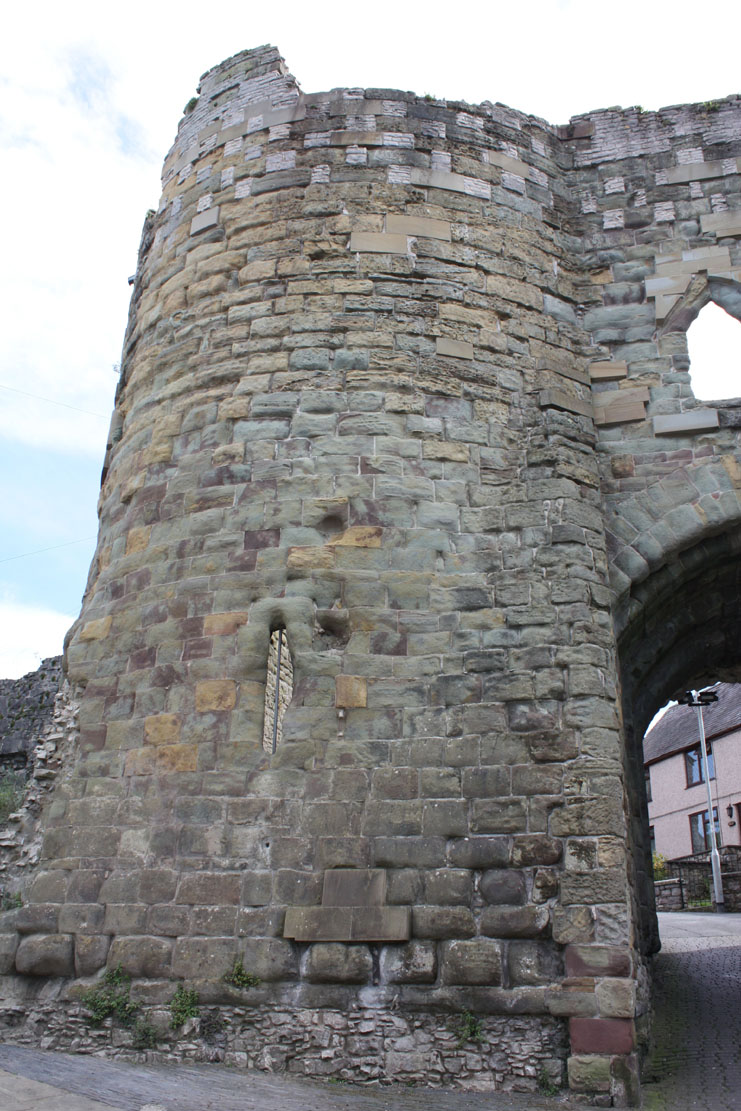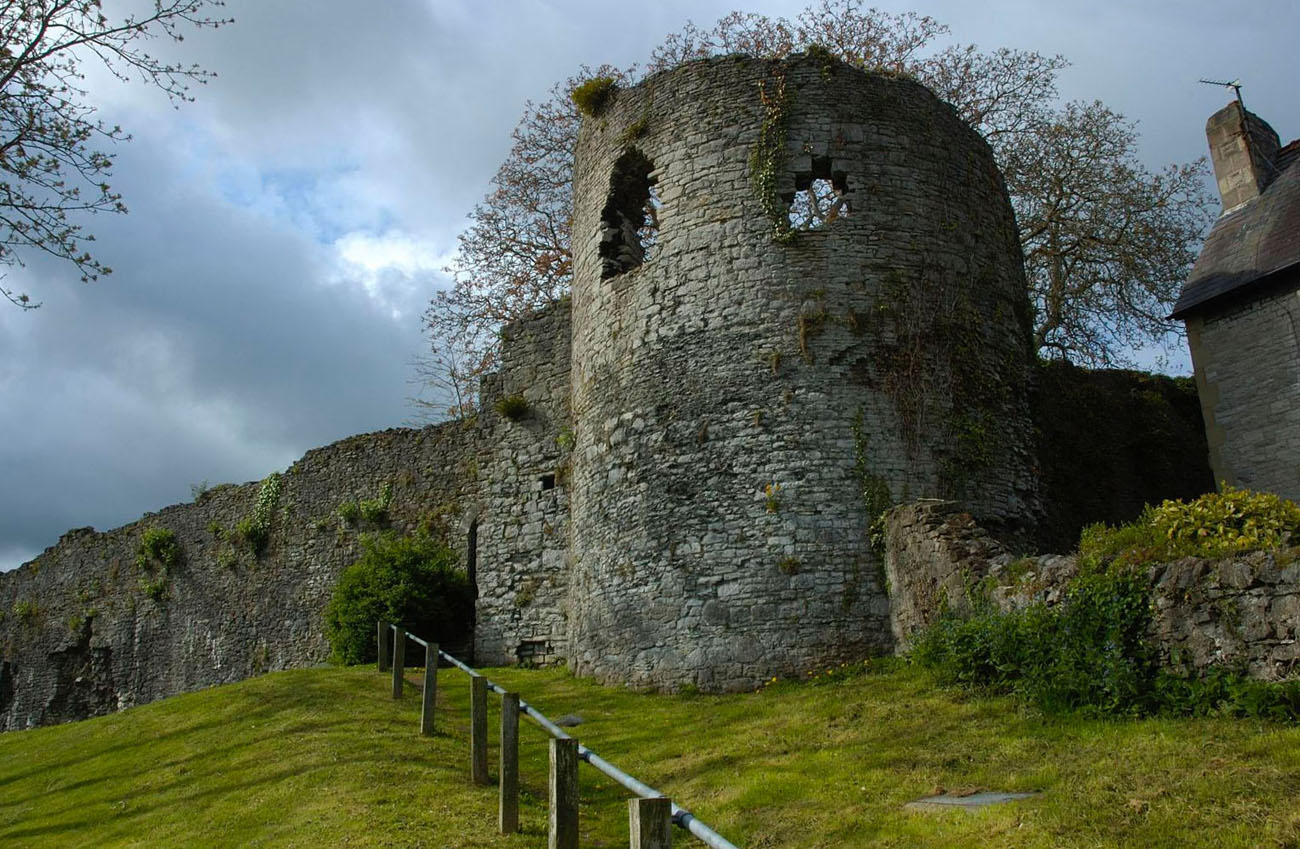History
Denbigh borough was founded after 1282 and received town rights in 1290. During this period, the construction of the town walls and the castle was initiated on the initiative of King Edward I and Henry de Lacy, Earl of Lincoln. The main north-eastern section with the Countess Tower was completed around 1290, the entire circuit was closed at the end of the 14th century, and in the first years of the 14th century section was erected that extended beyond the perimeter to the east, which was to protect the spring or well located there. This was important due to the drying of the castle’s well in the summer.
At the beginning of the 15th century, during the Welsh uprising of Owain Glyndŵr, the town and the castle apparently were not besieged and avoided destruction. Denbigh had less luck during the War of the Two Roses, when it changed hands several times. Ultimately, in 1468, the town fortifications did not stop the troops of Jasper Tudor, Earl of Pembroke, who burned town after conquering. Since then, Denbigh has been mostly abandoned by residents who have moved beyond the perimeter of the walls at the foot of the hill. While at the beginning of the fourteenth century there were 52 inhabited houses inside walls (outside fortifications then there were 183), in the second half of the fifteenth century there were 65 burgages in the town, and as many as 276 outside the walls. The former, largely depopulated town began to serve as an extensive outer bailey of the castle. This was influenced not only by the destructions from the war, but also by problems with the water supply on the town hill and the lack of space for market activities.
A serious test Denbigh fortifications passed during the seventeenth-century civil war. The town was besieged by the forces of Parliament under the command of generals Middleton and Mytton. Particularly fierce battles lasted for the Goblin Tower and taking control of the water source. The commander of the garrison, Colonel William Salesbury, lasted for 9 months, despite the weak artillery and lack of hope for relief. Eventually, king Charles I sent the commander a message, personally ordering him to give up the defense of Denbigh. After negotiations, Salesbury agreed to surrender on honorable conditions.
Architecture
The upper town occupied a larger part of the hill surrounded by a defensive wall, which closed 3.8 ha of land (approx. 300 x 200 meters). The circumference of the fortifications had an irregular plan with two bulges from the north and a castle located in the southern corner. In the north-east part of the wall, the wall was extended east from the main defense line, beyond the steep rock, to cover the water source there.
The defensive walls were built of unworked limestone supplemented with brown sandstone, mainly on rock foundations. The circumference was about 1,100 meters. The height of the wall today reaches 5 meters, but originally it was certainly higher, as the upper part crowned with a battlement did not survive. In the upper part, in the wall thickness, a defensive, uncovered walk-wall ran.
The defensive wall was reinforced with a half-round, now two-storey north-east tower (at which the latrine chute was located) and the Countess Tower located east of it. At this place, the fortifications ran near the rocky edge of the hill. The Countess Tower was in fact a complex of two four-sided corner towers and a small two-storey building on their southern side. The northern tower of this complex was extended entirely beyond the perimeter of the walls, at least two-storey and equipped inside, in the south-east corner with a fireplace. The eastern tower was larger, also heated by a fireplace on the lower floor, but it only slightly protruded beyond the face of the wall.
Below the Countess Tower, a small gate protected by a portcullis enabled the enter to the zwinger (salient) created in the fourteenth century, which task was to protect the only source of water that did not dry out in summer. This outer wall was defended by a powerful Goblin polygonal tower, protruding beyond the perimeter of the wall on a rocky cliff. It was 15 meters high (21 meters above the rock slopes on the outer side) and had large buttresses reaching 5 meters from the north. Inside, a narrow stone staircase led to the lower floor with the well. The upper floor was accessible by the staircase at the northern wall. It housed a fireplace with a cleverly placed smoke escape shaft. The section of the massive outer wall that connected the Goblin and Countess towers had two levels of arrowslits: the upper one accessible from the crown of the defensive walkway and the lower at the path between the towers. To the south of the Goblin Tower, the defensive walk-wall reached another wicket gate, secured by a small drawbridge, connecting to the main perimeter of the town walls. The next strengthening of the perimeter of the walls was the semi-cylindrical southern tower (Bastion Tower), located at a fairly distant distance, right next to the defensive walls of the castle. Originally, it had three or four floors and a checkered decoration made of yellow sandstone, similar to the Burgess Gate.
Only two main gates led to the town: Burgess Gate from the north-west and Exchequer Gate from the west. Both gates consisted of two towers protecting the passage between them and were preceded by a ditch over which a drawbridge was placed. The towers of the Burgess Gate were built on a horseshoe plan of limestone and yellow sandstone, which formed a checkered pattern. The original height of the gate could reach 18 meters. On its ground floor there was a vaulted gateway, closed in addition to the raised drawbridge, also by doors placed in the middle of the gate and a preceding it portcullis. Four ceiling murder holes and arrowslits in the side walls also provided defense. The eastern tower had a vaulted chamber, probably occupied by guards, while the room in the west tower had a wooden ceiling. On the first floor the towers housed two rooms: the smaller eastern one was equipped with a latrine and occupied only the eastern tower, and the larger room was in the western tower and in the central part. A fireplace was placed there above the gate passage. Stairs located in the thickness of the wall led from the western tower to the upper battle gallery protected by a breastwork with a battlement. A passage in the thickness of the wall led also from Burgess Gate to the castle, to the Red Tower.
Current state
To this day, a large part of the defensive walls has survived along with two gatehouses and four towers. In the best condition has survived the Burgess Gate, only the foundations are visible from the Exchequer Gate. The best preserved section of the walls is on the east side, where the wall ran from the Countess Tower to the ruined Goblin Tower and on the west side between the town gates.
bibliography:
Butler L., Denbigh Castle, Cardiff 2007.
Kenyon J., The medieval castles of Wales, Cardiff 2010.
Salter M., Medieval walled towns, Malvern 2013.

